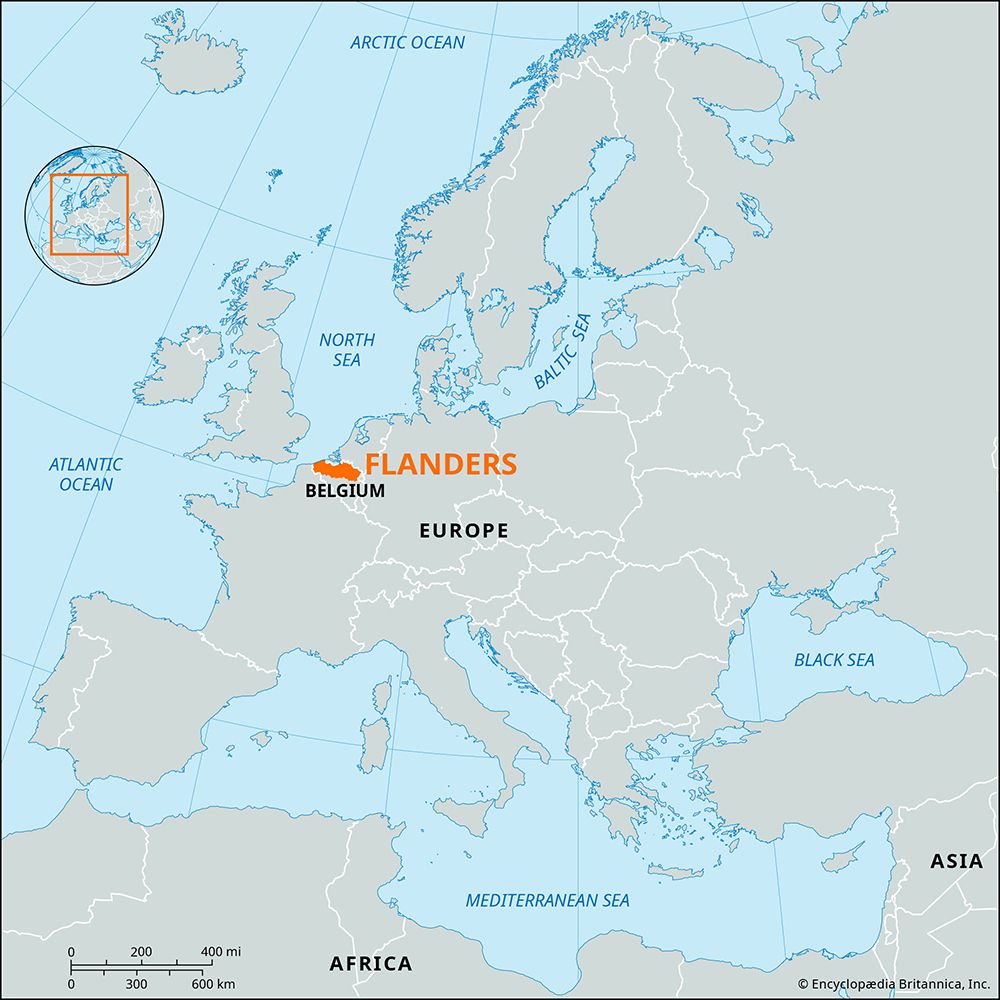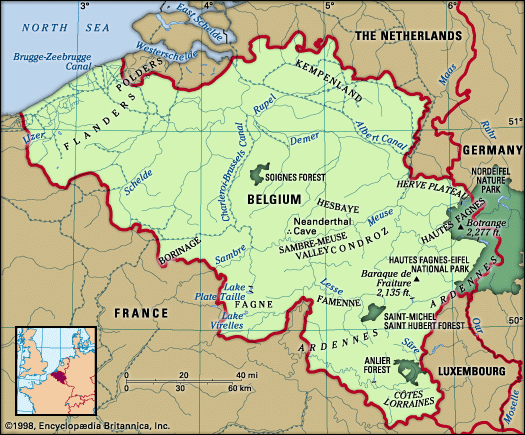Flanders
- Flemish:
- Vlaanderen
- Formally:
- Flemish Region
- Flemish:
- Vlaamse Gewest
- Key People:
- Jean Mone
- Henry Wilmot, 1st Earl of Rochester
- Jean le Bel
- Related Places:
- France
- Netherlands
- Belgium
Flanders, region that constitutes the northern half of Belgium. Along with the Walloon Region and the Brussels-Capital Region, the self-governing Flemish Region was created during the federalization of Belgium, largely along ethnolinguistic lines, in the 1980s and ’90s. Its elected government has broad authority over social and economic policy and administration. Flanders includes the provinces of Antwerp, East Flanders, Limburg, Flemish Brabant, and West Flanders. A small portion of the region is located outside Belgium proper: Baarle-Hertog (Baerle-Duc), a municipality administered by Antwerp province, is composed of a number of small enclaves in the Netherlands (the Dutch municipality of Baarle-Nassau is interwoven with these enclaves). The Brussels-Capital Region lies within but is administratively separate from Flanders; however, the city of Brussels also serves as the capital of the Flemish Region.
Flanders is predominantly flat. The Kempenland, the plateau region in the northeastern part of Flanders, is characterized by sand dunes and areas of broom, heather, and poor pasture. There are extensive blocks of coniferous plantations. The low, undulating Central Plateaus occupy the central part of the region. The northwest consists of a fertile low-lying plain. Farther west are the Flemish polders (land reclaimed from the sea), which are seamed with drainage channels and which extend for 6–10 miles (10–16 km) inland. The straight unembayed coastline of maritime Flanders is backed by a rampart of sand dunes. Important rivers in the region include the Schelde, Dender, Dijle, Nete, Rupel, Yser, and Meuse, the last of which forms a portion of the border with the Netherlands. Flanders has a temperate climate, with strong maritime influences in the west.
Most people of Flanders, called Flemings, speak Flemish, which is the same as Standard Dutch. The vast majority of the population lives in urban areas. The largest cities are Brussels, Antwerp, Ghent, and Brugge. East Flanders is one of Europe’s most densely settled areas; Flemish Brabant also is heavily populated in its western portions, which are dominated by the Brussels metropolis.
Historically, Flanders was a hub of trade and the centre of Europe’s textile industry, dating back to the Middle Ages. During the 19th century it lost economic importance to the more heavily industrialized Wallonia. The fortunes of the region improved in the 20th century: the construction of the Albert Canal (1930–39) from Antwerp to Liège stimulated the growth of the Flemish economy, as did post-World War II economic liberalization and foreign investment. By the end of the 20th century, Flanders boasted a prosperous diversified economy. Meanwhile, as Wallonia’s aging industries declined, the Flemish economic resurgence exacerbated political tensions between the two regions. (For more information on the history of Flanders, see Belgium: History; Brabant; Flanders, the historical region.)
Although agriculture is now a relatively small contributor to the Belgian economy, Flanders contains some of the country’s leading agricultural areas. In the fertile polders of West Flanders, grass, oats, and fodder crops support extensive livestock raising (especially horses, cattle, and pigs). In the interior plain, cereals, sugar beets, potatoes, flax, and other crops are grown. Additionally, market gardening is a significant activity in the region, as is the production of flowers and nursery plants.
Rich coalfields in the Kempenland, developed after World War I, once produced much of Belgium’s coal, but these were abandoned in the late 20th century. Today important industries include petroleum and chemical processing, the refining of zinc and other nonferrous metals, nuclear power production, glassmaking, and automobile assembly. The textile industry remains significant, though it has shifted its focus away from traditional wool and linen production. Antwerp continues to be known for its centuries-old diamond trade. The region’s service sector also is well developed: an important high-tech and research industry has emerged, and tourism is a major source of income. Tourism is particularly strong in the coastal area of West Flanders, which features a string of seaside resorts, notably Ostend, Blankenberge, Knokke-Heist, and De Panne. A number of theme parks and medieval castles in the region also draw visitors. Area 5,221 square miles (13,522 square km). Pop. (2008 est.) 6,161,600.













